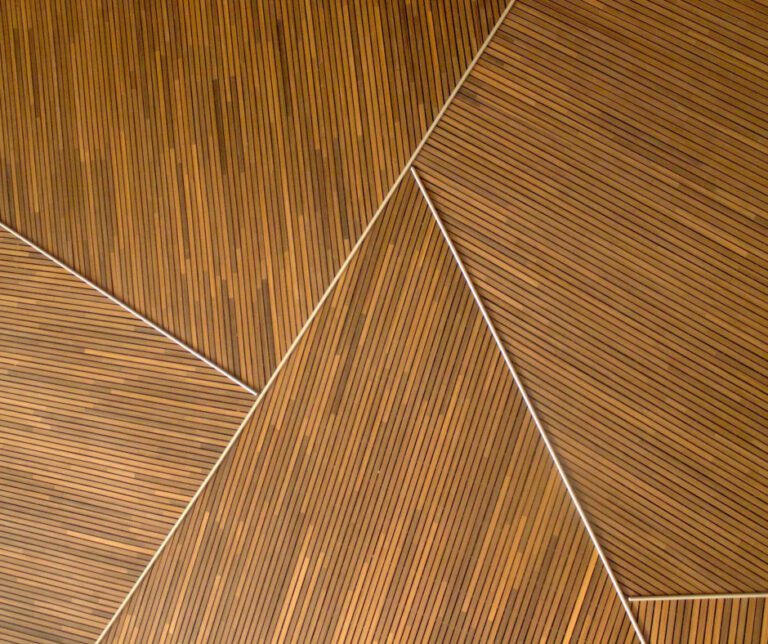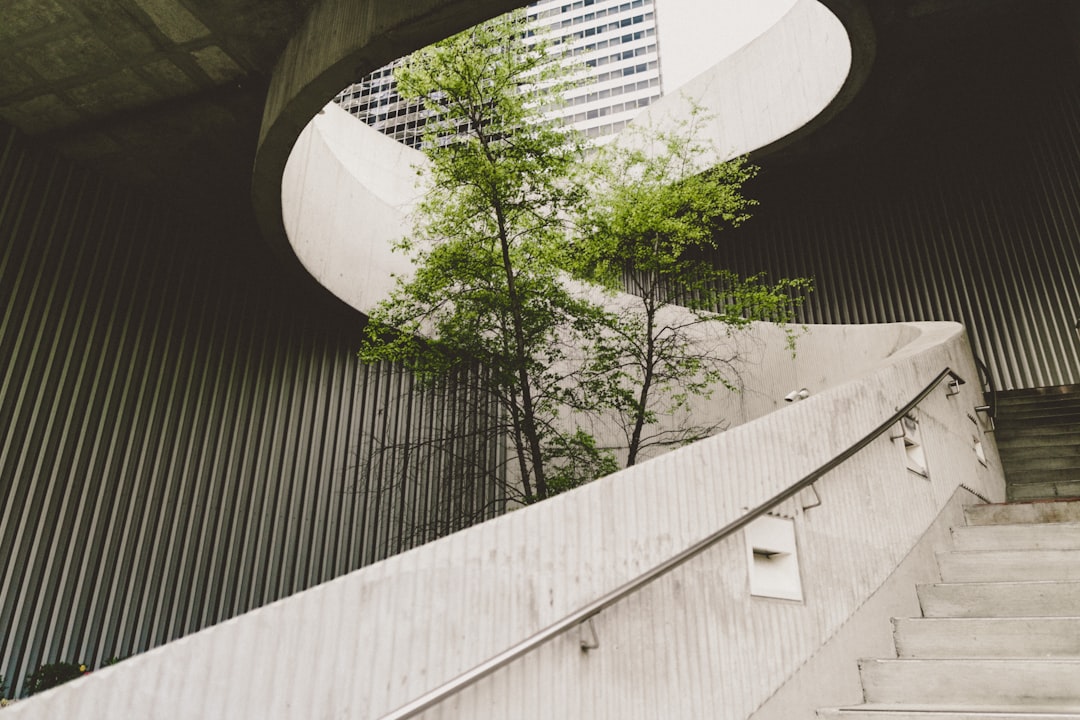The Bamboo Play Project: Uniting Artistry and Engineering with Sustainable Architecture at Virginia Tech

The “Bamboo Play” installation, a collaborative project completed by students from the ARCH 5134 Integrated Computational Design and Fabrication course at Virginia Tech, stands as a prime example of the university’s commitment to promoting sustainability and architectural innovation. This impressive installation, situated at Hahn Horticulture Garden, is a visually stunning fusion of artistry and engineering, featuring a bamboo structure containing 346 distinct elements that embody the synergy of computational design and sustainable materials in architecture.
The significance of the “Bamboo Play” installation extends beyond its aesthetic appeal. It serves as a living testament to Virginia Tech’s dedication to advancing sustainable construction through mathematical methods and innovative design principles. By involving students, teachers, and external research sponsors in this project, the university has exemplified its collaborative approach to promoting sustainability within the academic community, further solidifying its position as a leader in sustainable architectural advancements. This installation has not only provided a platform for students to showcase their skills but has also contributed to the university’s global impact as a promoter of sustainable practices in architecture and construction.
Exploring the Bamboo Play Installation
The “Bamboo Play” installation at Hahn Garden is a testament to the synergy of computational design and sustainable materials in architecture. The bamboo structure, comprising 346 distinct elements, not only serves as an aesthetically pleasing installation but also represents a remarkable fusion of artistry and engineering. For instance, the intricate design of the bamboo structure not only provides a visually captivating experience for visitors but also demonstrates the students’ prowess in computational design principles, translating them into a tangible architectural marvel.
Moreover, the innovative approach adopted by the students in creating the installation exemplifies their ability to push the boundaries of sustainable construction through mathematical methods. By strategically utilizing computational design, the team was able to transform bamboo, a traditionally used material, into a contemporary architectural element that embodies sustainability and innovation. This not only showcases the students’ creativity and knowledge but also contributes to the ongoing discourse on sustainable architectural practices, positioning Virginia Tech as a leading institution in architectural innovation and sustainability.
Research and Innovation with Bamboo
The BioDesign Research Group (BDRG) at Virginia Tech has been instrumental in re-tooling bamboo for sustainable construction, showcasing the university’s commitment to innovation and research in sustainable architectural practices. By leveraging advanced computational design methods, the BDRG has successfully reimagined the potential of bamboo as a versatile and eco-friendly building material. This is exemplified by their work on the “Bamboo Play” installation, where the traditional bamboo material was transformed into a structurally sound and visually striking architectural element, pushing the boundaries of sustainable construction through mathematical methods.
In addition to re-tooling bamboo, the BDRG’s collaboration with external research sponsors has allowed for the exploration of cutting-edge techniques in computational design and sustainable materials. Their innovative research has not only influenced the local architectural landscape but has also sparked global interest in sustainable construction methodologies, positioning Virginia Tech as a frontrunner in the advancement of eco-conscious architectural practices. This groundbreaking initiative not only provides a platform for students to engage in real-world sustainable design challenges but also contributes to the university’s global impact in promoting sustainability on a larger scale.
Global Impact of Virginia Tech in Sustainability
Virginia Tech’s influence in promoting sustainability extends globally, impacting not only the community and the Commonwealth of Virginia but also the world at large. As a prominent global land grant institution, the university continues to demonstrate its commitment to sustainability through various initiatives, thus leaving a lasting imprint on the global architectural landscape.
One example of Virginia Tech’s global impact in sustainability is the “Bamboo Play” installation at Hahn Horticulture Garden. This innovative project showcases the university’s dedication to pushing the boundaries of sustainable construction through the application of computational design principles and the use of eco-friendly materials. By leveraging bamboo, a sustainable and renewable resource, the installation not only serves as an artistic and engineering marvel but also highlights the university’s investment in sustainable architectural innovations that can be adopted and appreciated on a global scale.
Furthermore, the university’s impact is felt globally in promoting sustainability, as evidenced by its collaboration with external research sponsors and organizations dedicated to sustainable development and architectural advancements. Through these collaborative efforts, Virginia Tech is driving change and influencing sustainable construction practices not only within the local community but also in the broader context of global architectural discourse. This signifies the university’s proactive role in promoting sustainable practices and architectural innovation on a global level, making it a key player in the pursuit of a more sustainable and environmentally conscious future.
Key Contributors and Collaborative Efforts
The completion of the “Bamboo Play” installation at Hahn Horticulture Garden was a result of a remarkable collaboration between various stakeholders, including teachers, TAs, volunteers, and students from diverse disciplines. This collaborative effort exemplifies the interdisciplinary nature of the project, with individuals from different academic backgrounds coming together to contribute their expertise and creativity to the installation. For instance, architecture students brought their design and computational skills, while engineering students applied their knowledge of sustainable materials to the project, resulting in a truly holistic approach to the creation of the bamboo structure.
Moreover, the pivotal role played by external research sponsors in supporting the project cannot be overstated. Their contribution not only provided the necessary resources for the implementation of the installation but also served as a testament to the broader impact and relevance of the project within the academic and research community. Furthermore, it is essential to extend a special acknowledgment to Professor Kay Edge and the Graduate Program of Architecture for their unwavering dedication and leadership in guiding the students through the intricate process of conceptualizing and bringing the “Bamboo Play” installation to life at the Hahn Horticulture Garden. Their mentorship and expertise were instrumental in fostering an environment of innovation and collaboration, paving the way for the successful completion of this groundbreaking project.
Eco-Friendly Enjoyment for Years to Come
The “Bamboo Play” installation at Hahn Garden is a remarkable demonstration of Virginia Tech’s commitment to sustainability and architectural innovation. The fusion of artistry and engineering in the bamboo structure, which contains 346 distinct elements, showcases the university’s dedication to pushing the boundaries of sustainable construction through mathematical methods. This initiative not only embodies the university’s global impact in promoting sustainability but also highlights the potential of computational design and sustainable materials in architecture.
The collaborative effort involving students, teachers, external research sponsors, and the BioDesign Research Group has been instrumental in re-tooling bamboo for sustainable construction and showcasing the significant role of mathematical methods in the architectural landscape. The completion of the “Bamboo Play” installation is a testament to the university’s ability to bring together diverse expertise and resources to create a sustainable and innovative architectural masterpiece, setting a high standard for future projects.
Few plants offer the strength and beauty that bamboo does. It is truly a plant of emmaculate design.
Learn More about the uses for bambooWe are dedicated to the promotion and use of bamboo throughout the world. Bamboo is a plant that offers limitless potential for the future. It offers us strength, sustainability, versatility, and a green alternative.

Bamboo Grove on Twitter
Bamboo Grove YouTube Channel
Moline, IL
info@bamboogrove.com